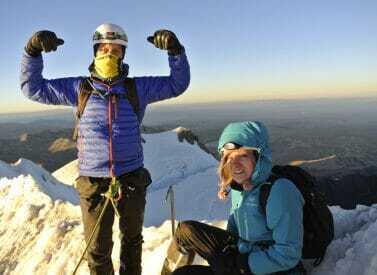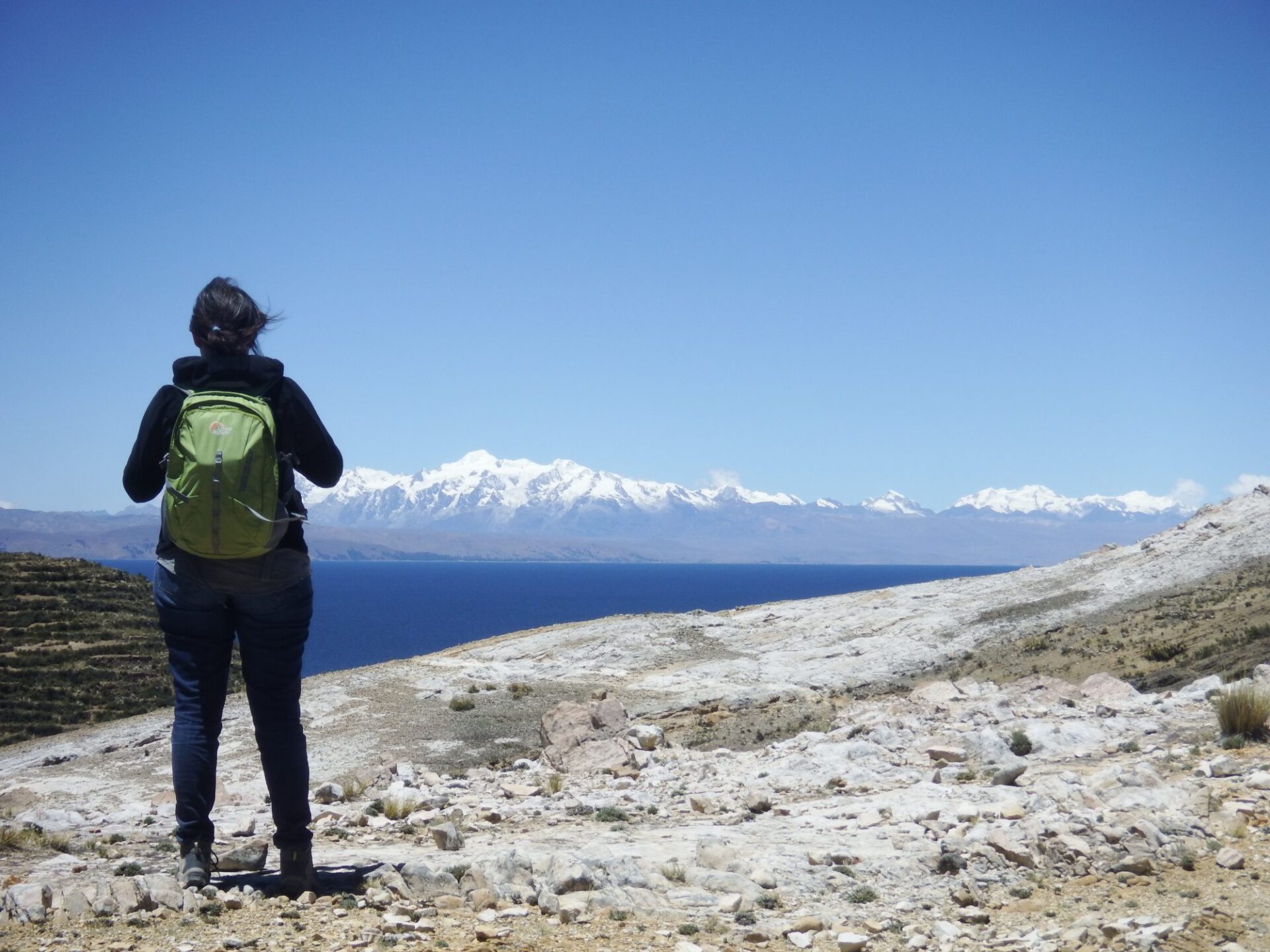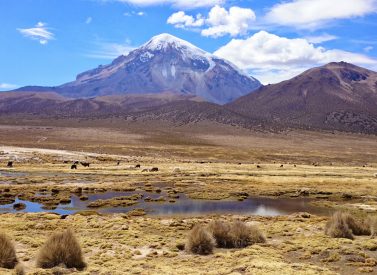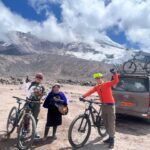
Condoriri Trek & Hike, Huayna Potosi
A fully-guided 4-day Condoriri Bolivia high mountain trek.
Condoriri is a striking mountain to trek around – its three highest peaks together resemble a condor lifting its wings before take off.
The great chain of majestic peaks of the Cordillera Real, to the north of La Paz, dominates the landscape on the scenic drive in.
Aptly, Condoriri is an excellent area of the Cordillera Real to spot condors.
A spectacular, fully-guided 4-day Condoriri Bolivia high mountain trek.
Condoriri is a striking mountain to trek below – its three highest peaks together resemble a condor lifting its wings before take off.
The great chain of majestic peaks of the Cordillera Real, to the north of La Paz, dominates the landscape on the scenic drive in.
Aptly, Condoriri is an excellent area of the Cordillera Real to spot condors.
More on Condoriri trek
We start our trek at Rinconada near Lake Titicaca.
We hike over high passes through lovely scenery, including the opportunity to climb the peak of of Pico Austria (5,350m/17,552ft).
Much of the trek is about 4,500m/14,764ft, and requires good acclimatisation before starting out.
The trek skirts the western side of the Cordillera Real.
It then heads into the heart of the mountains, where you’ll find yourself rubbing shoulders with the glaciers.
We end by crossing a spectacular pass offering fantastic views of the Huayna Potosí massif.
Trip Highlights
Print Share Download as PDF-
High peaks and valleys of the Condoriri Range, Bolivia.
-
Get up close to glaciated Andes mountains, spot condors and llamas.
-
See high Andean rural culture as you trek past remote lakes.
-
Star-filled clear night skies.
-
Superb local guides show you the best of the range.
-
Fully supported trek, so you just trek with a daypack, all the better to enjoy the scenery.
The Condoriri walk was breathtaking … and on some of those passes, boy, were we taking breaths!
J. Miles, Condoriri trek
Full Itinerary
Day 1: La Paz, drive to Rinconada, hike to Jurikhota Lagoon, camp (L,D)
Pick up at your hotel in La Paz.
Over the next fours days you will walk beneath the 13 dramatic peaks of the Condoriri massif, peaks between 5,100-5,648m/16,732-18,530ft, the highest of which is Cabeza del Condor. As its name suggests this peak has a condor like form and is a prominent feature on the Cordillera Real skyline.
Leaving La Paz we set off early in the morning toward Lake Titicaca, traveling along scenic mountain roads that offer stunning views of the Andes. After approximately 1.5 hours, we turn off the main route and head into the heart of the Cordillera Real, following a dirt road for another hour. The drive takes us through remote landscapes dotted with small farming communities, where locals can be seen tending to their fields and livestock.
We arrive at Rinconada (4,400 meters), the starting point of our trek. The trail begins with a gentle ascent through grasslands. As we progress, the terrain becomes slightly steeper but remains manageable, with breathtaking views of the surrounding peaks.
After about three hours, we reach the Jurikhota Pass (4,850 meters), a natural vantage point that rewards us with our first panoramic views of the Cordillera Real. From the pass, we descend into the valley, where Jurikhota Lagoon (4,680 meters) comes into view. It is here we set up camp for the night.
Distance walked: 9.2 km/5.7 miles
Max altitude: 4,926m/16,161ft
Height gained: 532m/1,745ft
Height lost: 264m/866ft
Starting altitude: 4,431m/14,537ft
Finishing altitude: 4,680m/15,387ft
Day 2: Trek to Glacier Lagoon, Pico Austria, descend to Laguna Chiarkhota (4,650m), camp (B,L,D)
After breakfast, we begin hiking along the edge of the lagoon until we reach the Glacier Lagoon (4,800 meters) located at the base of “Ala Izquierda” (“Left Wing”) – a stunning spectacle with its icy blue waters surrounded by snow-capped peaks.
The path is rocky and occasionally the snow line drops this low. As we continue, the trail becomes more challenging, typical of high-altitude terrain, but the sense of accomplishment and the unparalleled views make every step worthwhile. We reach the Austria Pass (5,140 meters) and pause to take in the sweeping vistas of the Cordillera Real, with peaks stretching out in every direction.
From here, the final push takes us to the summit of Pico Austria (5,350 meters), a challenging but non-technical climb. Standing on the summit, we are rewarded with a 360-degree view of the Andes, including iconic peaks such as Illimani, Condoriri, and Huayna Potosí. After soaking in the views and capturing photos, we begin our descent toward Chiarkhota Lagoon (4,650 meters), a beautiful turquoise lake nestled at the base of towering cliffs. We set up camp near the lagoon (4,650 meters).
Distance walked: 6.2 km/3.8 miles
Max altitude: 5,150m/16,896ft
Height gained: 472m/1,549ft
Height lost: 498m/1,634ft
Starting altitude: 4,699m/15,387ft
Finishing altitude: 4,660m/15,305ft
Day 3: Trek Jistana Pass towards foot of Huayna Pototi, camp (B,L,D)
Today we continue towards the Jistana Pass (4,900 meters). As we cross the pass, the path becomes more rugged, and the scenery becomes a mix of high-altitude grasslands and rocky terrain. After the pass, we descend into the area near the historic Racachas mine, an abandoned site that offers a glimpse into Bolivia’s rich mining heritage.
From there, we continue trekking toward the majestic Huayna Potosí. Along the way, we encounter small streams and the occasional sighting of wildlife, such as llamas or alpacas grazing nearby. We might even see a condor soar above.
By late afternoon, we reach the campsite at the foot of Huayna Potosí’s imposing west face. Surrounded by towering peaks and a dramatic landscape, this campsite is a perfect end to our trekking journey.
Distance walked: 15.8 km/9.8 miles
Max altitude: 4,718m/15,480ft
Height gained: 409m/1,342ft
Height lost: 353m/1,158ft
Starting altitude: 4,665m/15,305ft
Finishing altitude: 4,748m/15,577ft
Day 4: Trek to Huallatani Pass, descent and transfer to La Paz, ends (B,L)
After breakfast, we set off early for the final leg of our trek.
The ascent to the Huallatani Pass (4,850 meters) is challenging, the trail meandering through high-altitude terrain, characterised by loose rocks and patches of snow depending on the time of year. As we approach the pass, the stunning views of the Huayna Potosí massif come into full view.
From here, we begin our descent along a trail that passes through valleys dotted with native flora. We gradually return to lower altitudes, and the landscape changes to lusher terrain.
We reach the pick-up point by mid-afternoon, where our vehicle back to La Paz awaits us.
Distance walked: 8.9 km/5.5 miles
Max altitude: 5,110m/16,767ft
Height gained: 491m/1,611ft
Height lost: 498m/1,634ft
Starting altitude: 4,748m/15,577ft
Prices From $1,280 / £1,041 per person
What's Included?
English-speaking trek guide, mules or llamas for kit transport, cook and dining tent, all group camping equipment, private transport to and from the trek, meals and water.
What's Not Included?
International flights (we can look for these for you), travel insurance, sleeping bag, items of a personal nature and tips.
Accommodation
Camping we use top quality two-man tents on all treks, with a dining tent for meals.
Toilets are a mix of pit latrines and toilet tents.
Tour Staff
All guides are certified, bilingual, English-speaking guides who have worked with us for many years.
Cooks, mule drivers and additional staff are all from the local, nearby communities and we have worked with them for a long time.
Meals
Vegetarians and many other dietary requirements are catered for without problems. Please let us know in advance of any requirements you have.
You wake early, usually around 07.00. Breakfast is served in a dining tent, and consists of hot drinks, porridge, toast, jams and bread, and your guide will explain the day’s trekking plans.
Lunch is usually around 13.00 and can feature soups, meats, salads and fish, with vegetarian options and hot drinks too.
The campsites are comfortable and around 17.00 hot drinks, popcorn and other snacks are served to help you recover energy.
Dinner is served around 19.30, and will feature pasta, quinoa, mashed potatoes, meat, fish or vegetarian options, followed by hot drinks and a pudding.
Activity Level
We have classified this as a strenuous trek, and you need to be in good physical shape and very well acclimatised before starting the trek.
You will walk 6-8 hours for consecutive days including over high passes – the highest is at 5,000m/16,404ft – and we walk and sleep at high altitude throughout this trip.
You can also climb Pico Austria, which is 5,350m/17,552ft.
Pre-trip preparation should include challenging cardiovascular exercise (including regular hikes on varied terrain) and a healthy, balanced diet.
Well-worn hiking boots are highly recommended.
All guests are encouraged to hike at their own pace, taking breaks whenever needed, to ensure a successful and enjoyable trek for all.
Most people go to bed fairly early after a long day trekking, to recover energy for the morning.
Practical Information
An introduction to Bolivia
Land-locked Bolivia is a country of dramatic landscapes and fascinating native cultures and traditions.
The Altiplano or “High Plain”, averaging 3,800m, is its most populous region. The vast, luminous plateau is flanked to east and west by parallel Andean ranges.
La Paz, the world’s highest capital, lies in a deep canyon at the edge of the Altiplano, and at the foot of Illimani (6,400m). It is a striking city for its dramatic setting and its strong Indian character.
Lake Titicaca is the world’s highest navigable lake. It was sacred to the Incas; according to legend, their founding emperor-gods rose from these waters to give birth to their empire. Just south of the lake stands the sacred pre-Inca site of Tiahuanaco.
Geography of Bolivia
On the south-western Altiplano are the Uyuni Salt Flats, the largest in the world. Here, the shimmering white salt pan and deep blue sky combine to create a truly magical spectacle.
The stunning Cordillera Real is a mountain range dominated by huge snow peaks, including Illimani and Illampu (6,380m). The Real divides the northern Altiplano from the tropical forests to the east. The Cordillera Real’s eastern slopes are characterized by the deep, sub-tropical Yungas gorges.
Further south, the tropical Chapare is the agricultural heart of Bolivia. East of this band of high forests and plantations lies Bolivia’s Oriente, a vast swathe of Amazonian jungle and savanna accounting for 2/3 of the country and featuring some of the last untouched wilderness on earth.
In the north-eastern Department of Beni, some 50% of the country’s mammals and birds reside. Below, and in no special order, we outline some of the top places to go and things to do.
Weather in Bolivia
Bolivia lies within the tropics, between latitudes 10º and 22º south. The climate, as varied as its geography, is affected by latitude and, especially, by altitude.
The best time to travel is the winter (dry season) between May and Oct when, typically, weather systems over the Andes are stable, and overall you can expect bright sunny days and cold clear nights. Most of the rain falls from Dec to March. Climate can be divided into these distinct zones:
The Andes and the Altiplano
There is relatively little precipitation on the Altiplano, especially in the dry season – most rainfall is from Dec to March. However, there is periodical, localised rain on high peaks and valleys all year round.
The further south and west you go on the Altiplano, the drier are the conditions; around Uyuni, semi-arid conditions prevail. The Andean sun’s rays are very strong.
Temperature-wise, the Andes and Altiplano experience significant fluctuations over a single day. At 4,000m, the pre-dawn temperature can drop to -15ºC, while noon temperatures at the same location can reach 20ºC.
Southerly cold winds mean the southern Altiplano is not only drier, but also noticeably colder and windier than the north (pre-dawn temperatures at Uyuni in July regularly drop to -20ºC).
On treks in the Cordillera Real in the dry season, expect a range of conditions within a single day: cold/freezing nights at camps above 4,000m (where pre-dawn temperatures sometimes reach -15ºC); warm, spring-like mornings and afternoons; and cold evenings. Conditions are generally dry, but note that mountain weather is fickle and localised, and precipitation is not unusual in the dry season.
Expect temperatures to swing between sun and shade, sheltered and exposed ground and with altitude gain and loss. A quick-setting sun means temperatures drop fast.
The city of La Paz (3,630m) is relatively sheltered. Average high/low temperatures range from 1-17ºC in June and July (coldest months) to 6-19ºC in Nov and Dec (warmest months). In June and July, it rarely rains more than 1 or 2 days per month, while in January there are on average 15 wet days.
The tropical lowlands & yunga (Amazon)
Year-round, weather conditions in the Amazon basin are hot and humid and always with the chance of rain.
There is a ‘cooler’, drier winter season between May and October. During this ‘dry season’, the average daytime high temperature is between 25-31°C and the average nighttime low is between 16-22°C.
In the dry season, heavy downpours typically occur every few days.
Note that around 80% of annual average rainfall – approx 2,000 mm in Bolivia’s northern lowlands – occurs in the wet season, Nov-April.
On rare occasions, between May and September, cold fronts from Argentina – surazos – can sweep into southwest Amazonia and push temperatures down to 9°C. (Surazos usually last between 1 and 3 days).
The Yungas shares the same dry/wet months but varies from quite wet to very wet depending on whether it is the ‘dry’ or rainy season. Average temperature is 24°C.
Kit list
Good kit is vital for every trip.
Book with Andean Trails and get 15% off Páramo’s fantastic ethical and high performance outdoor gear.
Overview
When planning for the varied climatic conditions encountered, layering is the most practical and versatile clothing system. It’s worth remembering that our clothing keeps us warm by retaining and isolating the heat we ourselves create.
To best maintain body heat, several layers of lightweight, warm and quick-drying clothing are far more efficient than one or two thick layers. Layers should have the following qualities:
- Breathability (able to wick away the humidity produced by sweat):
- Isolation (able to keep in the warm air our body produces); and
- Impermeability (able to impede the passing of wind and water).
First (base) layer: This layer wicks the sweat away from our skin, thus helping keep the body dry and warm. To this end, synthetic fabrics such as polypropylene should be used.
Mid layers: These isolating layers should also be synthetic (e.g. the known polar linings such as polartec or windblock, which are light and insulate twice as well as wool). Very important layers for retaining body heat.
Outer layer / shell: Finally, the vital layer which protects us from climatic adversities. A breathable, wind-proof and waterproof anorak, such as Goretex.
Give plenty of thought to kit selection, and try to keep weight down.
We also carry an extensive first aid kit & oxygen on all trips, but these are generally for emergencies only.
Below is a more detailed kit list.
Detailed kit list
- 2 pairs synthetic inner socks (e.g. polypropylene, thermastat, coolmax) and 2 pairs thick loop-stitch/wool socks for cold.
- Trekking boots – should be well broken-in, waterproof and provide good ankle support.
- Trainers/sandals for city-wear, evenings at lower camps & river crossings.
- Base layer leggings (1 pair).
- Thick fleece leggings (or salopettes) (1 pair).
- Goretex-type over-trousers (or salopettes) (1 pair).
- Trekking trousers (2 pairs).
- Shorts – wear sparingly in early stages at altitude, as sun burns.
- Thermal base layer shirts (2).
- Microfleece mid-layer shirt (1).
- Shirt/t-shirt 1 or 2 for lower altitudes. Long-sleeved, collared shirt protects against sun
- Fleece jacket or similar (1).
- Warm jacket (down or synthetic). For camp and upper slopes.
- Waterproof Goretex-type jacket.
- Broad-brimmed sunhat, essential.
- Warm hat, fleece or wool. (N.B. Up to 30% of body heat can be lost through the head).
- Sunglasses with UV filter.
- Scarf for cold.
- Bandanna – to protect neck from strong sun.
- Light inner gloves
- Warm gloves, e.g. fleece, and outer waterproof gloves or mittens (1 pair)
- Mittens allow you to keep the fingers together, and better conserve heat (though they also make it difficult to perform certain tasks).
- Daypack (at least 30 litres). Comfortable and with waterproof lining or cover.
- Large rucksack or suitcase.
- Pair of telescopic trekking poles (can be rented).
- Duffel bag or large rucksack for extra clothing, carried by horse/mule/porter while you are trekking.
- Sleeping bag (3-4 season, can be rented).
- Water bottle (2 litres approx.) & purification tablets.
- Personal first-aid kit to include: painkillers, plasters (band-aids), moleskin, anti-biotic cream, general antibiotics (ask your GP), after-bite (tiger balm), anti-diarrhoea tablets, throat lozenges, re-hydration salts & personal medication.
- Insect repellent.
- Towel & wash-kit.
- Wet Wipes/antiseptic hand-wash cream.
- Toilet paper (1)
- Sunscreen (factor 30+) and lip salve.
- Head-lamp (plus spare bulb and batteries).
- Penknife.
- Travel alarm clock.
- Plastic bags – ‘Zip-loc’ & tough bin liners.
- Camera and film / memory cards (take at least twice the amount you think you will need!). Print & slide film is available locally. Polarising filter is recommended for SLR cameras.
- Book, e-book, mp3 player/ipod or other for free time.
- Binoculars.
- Spanish/English phrasebook.
- Extra snacks i.e. cereal bars or favourite chocolate bars.
All other non-personal trekking camping gear e.g. tents, cutlery etc is provided.
Miscellaneous others
- Money belt.
- Passport.
- U.S. dollars cash, mixed-denomination notes, undamaged and unmarked.
- ATM cash/credit card.
- Any inoculation certificates.
- Personal & medical insurance certificates.
- Presents e.g. Postcards from home.
- Comfortable clothes for travel, smart clothes for night life.
ATOL holiday protection
Andean Trails has 25 years of experience of putting together the best South America holidays.
We pay a fee to the CAA for every licensable passenger we book since we hold an Air Travel Organiser’s Licence granted by the Civil Aviation Authority. In the unlikely event of our insolvency, the CAA will ensure that you are not stranded abroad and will arrange to refund any money you have paid to us for an advance booking.
We also offer ATOL (Civil Aviation Authority) protected holidays to give our customers peace of mind when booking and travelling.
When you buy an ATOL protected air holiday package from Andean Trails Ltd you will receive a Confirmation Invoice from us confirming your arrangements and your protection under our Air Travel Organiser’s Licence number 6275.
You can read more about ATOL, who is covered and what protections you have if not ATOL-covered, on our ATOL page.
What is ATOL?
The CAA’s ATOL scheme offers protection to your money and your holiday if you book with us. Not everybody is covered (see ‘Who is covered?’ for more), as you must purchase an ‘air package holiday’ with Andean Trails to be protected.
And ‘air package holiday’ is defined as including a flight and some ground services (hotel, transfer, trek etc). This is also known as an ‘ATOL-protected holiday’.
Who is covered?
To be covered by ATOL, you must book a flight and some ground services with us and be from the UK. If you are from the UK and only book ground services and no flights, you are not covered by ATOL (see below for more on how non-ATOL clients are covered).
If you are outside the UK and buy flights with us, you will be ATOL protected IF any of the flights booked with Andean Trails touches/stops in the UK at any point during your holiday package booked with us.
If you buy your flights elsewhere, please check with that agent if you are ATOL protected. Be careful with online flight purchases and make sure you know what protection you have, if any, before paying for flights.
Not all holiday or travel services offered and sold by us will be protected by the ATOL scheme. Please ask us to confirm what protection may apply to your booking.
For land only holidays not involving any air travel, in accordance with “The Package Travel, Package Holidays and Package Tours Regulations 1992”, all UK passengers booking with Andean Trails Ltd. are fully protected for the initial deposit and subsequently the balance of all money paid to us, arising from cancellation or curtailment of travel arrangements due to the insolvency of Andean Trails.
I’m not ATOL covered, what protection do I have?
If you are not ATOL covered, any payments you make to us go to a Trust account.
We can only access this money once your tour has been completed, meaning that if anything happens to Andean Trails Limited while you are on holiday, then your money is secure and you can either complete the trip or be able to make it home.
If you pay for your holiday with a credit card, some offer payment protection – please check with your cardholder.
You also should have cancellation protection written into your insurance (which we recommend you have at the time of booking) in case you need to cancel.
Bolivia’s Amazon rainforest
The gateway to the Bolivian Amazon lies at the lively town of Rurrenabaque.
Motorised canoes will take you into the rich and verdant realms of the Madidi National Park, a hub of ecotourism in the Bolivian Amazon basin.
On a network of paths and waterways you can immerse yourself in the hot and humid tropical paradise that is the rainforest.
Wildlife such as howler monkeys and pink river dolphins, as well as a colourful indigenous culture, are a magnet for those who like to experience not only the Andean climates of Bolivia but to venture further into the depths of this fascinating country.
Condoriri and the Cordillera Real, Bolivia
The Cordillera Real of Bolivia is a range of awe-inspiring snowy peaks just south of La Paz.
The towering peaks of this mountain range, dominated by Illimani (6,400m/20,997ft), Illampu (6,368m/20,892ft) and Ancohuma (6,427m/21,086ft), form a magnificent barrier which separates the Altiplano from Bolivia’s extensive rainforest.
The range is criss-crossed by ancient pilgrimage and trading routes and gives avid trekkers plenty of options to escape civilisation into the incredibly dramatic high Bolivian altitudes.
In the Condoriri Range you still won’t meet many fellow hikers but will find yourself in the company of majestic peaks, high altitude passes with stunning views, grazing herds of llamas and alpacas and soaring condors.
La Paz, Bolivia
La Paz is a capital like no other, set in high Andean climates and surrounded by the magnificent Andean Cordillera Real mountains.
Here you can sit at a cafe and watch the local ladies in their bowler hats and colourful traditional costumes. Immerse yourself in the fascinating culture of its indigenous population.
Take a cable car ride on the Teleferico to El Alto, the enormous satellite city spread across the Bolivian Altiplano high above La Paz.
Marvel at the views and its bustling streets.
Visit the craft markets, full of colourful weavings and woolly jumpers, there are souvenirs to suit every taste.
Don’t forget to explore and haggle at the intriguing Witches’ market, home to all sorts of potions.
La Paz really is full of life.
Lake Titicaca, Bolivia
Bolivia’s Lake Titicaca is home to the lively lake side town of Copacabana.
Stay for a few days to explore the lake shore and the islands. Copacabana is likely to be your entry point if coming overland from Puno in Peru and heading for La Paz.
Pass the 12 stations of the Cross as you hike up to the nearby hill for views over the lake to the Islands of the Sun and the Moon with a beautiful mountain backdrop, the high ice-covered peaks of the Cordillera Real shimmering in the distance.
Take a one day or overnight trip by boat to the islands, Isla del Sol and Isla de la Luna, where you can learn something of traditional island life as you wander along the ancient networks of paths.
Sajama, Bolivia’s highest peak
Sajama National park offers fabulous off the beaten track trekking and some easy Andean peaks amid amazing natural beauty.
A few hours from La Paz by four wheel drive brings you to Sajama National Park.
In this beautiful remote high mountain area you have the opportunity to explore a little visited part of southern Bolivia, right on the border with Chile, in the shadow of Bolivia’s highest peak – Nevado Sajama (6,542m/21,463ft).
Snow-capped volcanoes fringe the vast altiplano and lagoons lie only a walk away in the mountains.
Geysers and hot springs await and you can be sure to see a variety of typical Andean wildlife, such as llama, vicuna, alpaca, Andean flamingos and viscachas.
Torotoro National Park, Bolivia
Torotoro National Park is a jewel for those seeking to escape the crowds – offering caves, canyons and fossilised dinosaur footprints.
The stunning Torotoro National Park is still an off the beaten track destination in Bolivia and well worth a visit.
Its highlights include some of the best preserved dinosaur footprints in South America, as well as stunning geological formations from an era long gone.
There are day walks across volcanic landscapes and you’ll pass by remote Andean villages, giving an insight into true Andean culture.
Prices From $1,280 / £1,041 per person
2025 price, per person, shared tent basis
Shorter/longer treks possible
Based on two people
4 people: USD 871 per person
CONFIRMED DEPARTURES 18-21 Apr/11-14 Aug/16-19 Sep 2025

Dates & Prices
Prices From $1,280 / £1,041 per person
2025 price, per person, shared tent basis
Shorter/longer treks possible
Based on two people
4 people: USD 871 per person
CONFIRMED DEPARTURES 18-21 Apr/11-14 Aug/16-19 Sep 2025
Can’t find what you’re looking for? Get in Touch
+44 (0)131 378 5593
+44 (0)131 554 6025



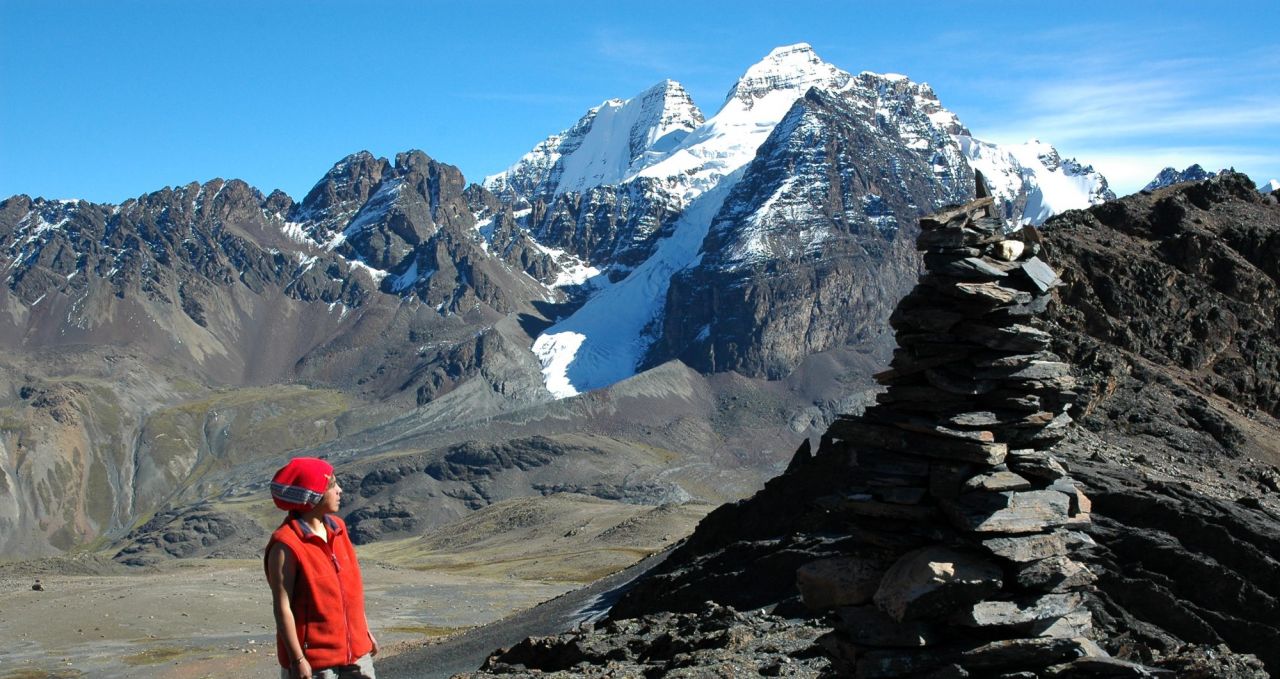
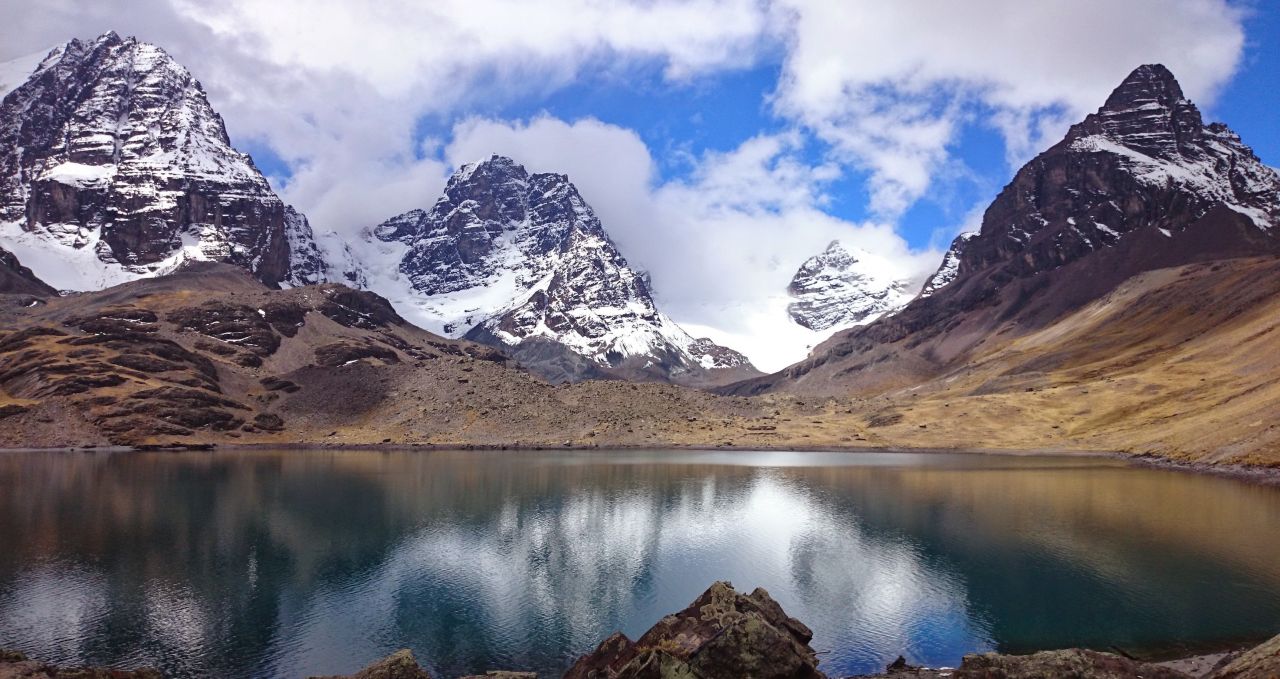
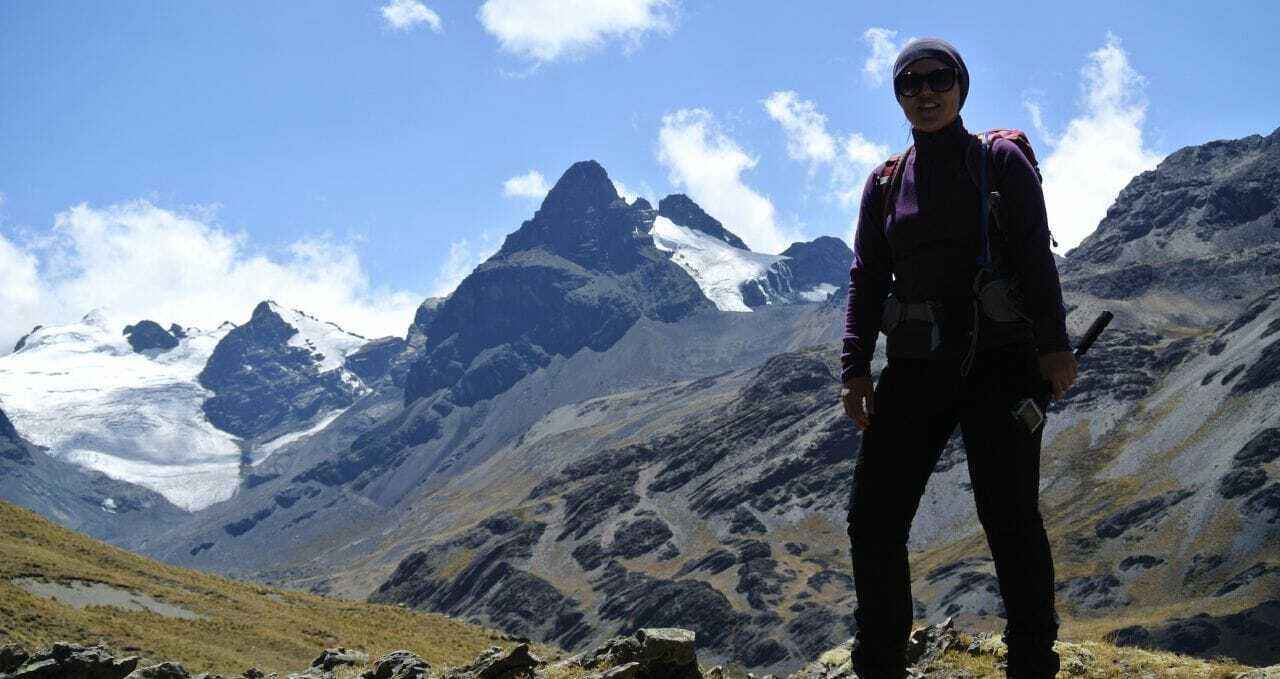
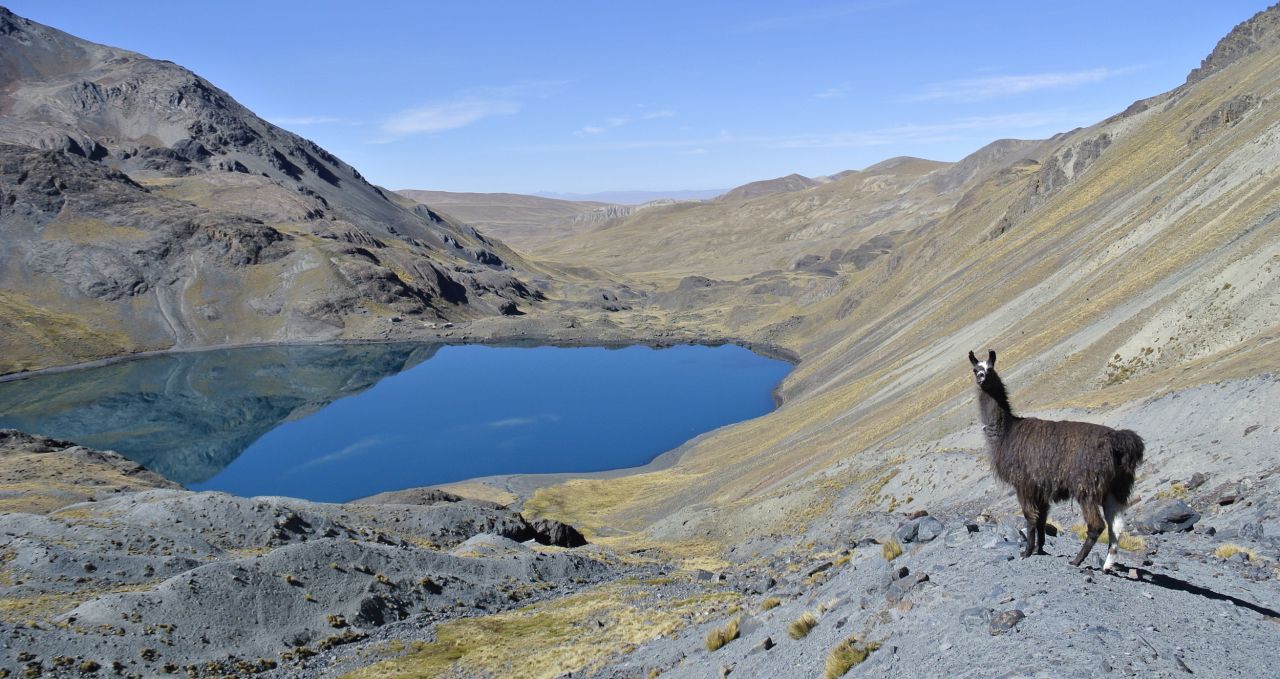
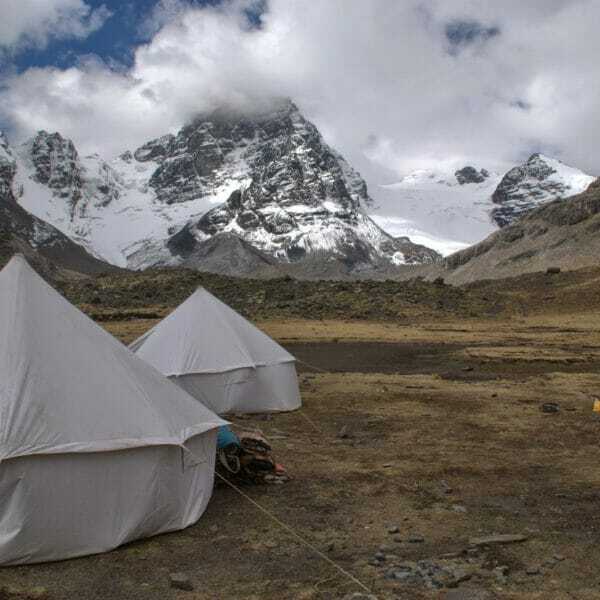
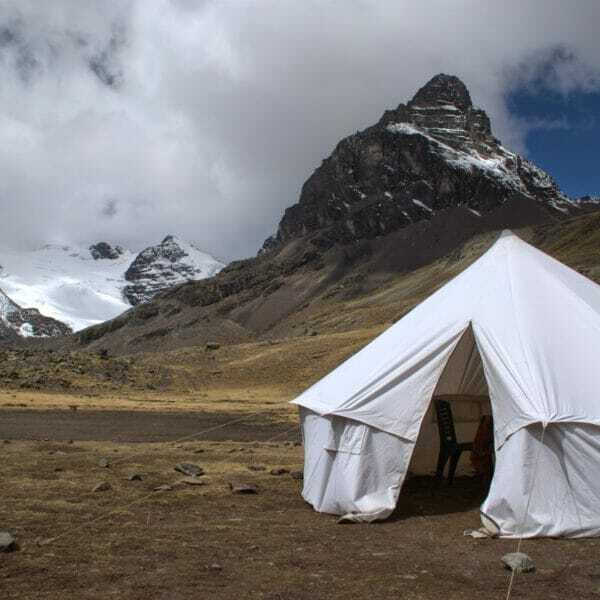
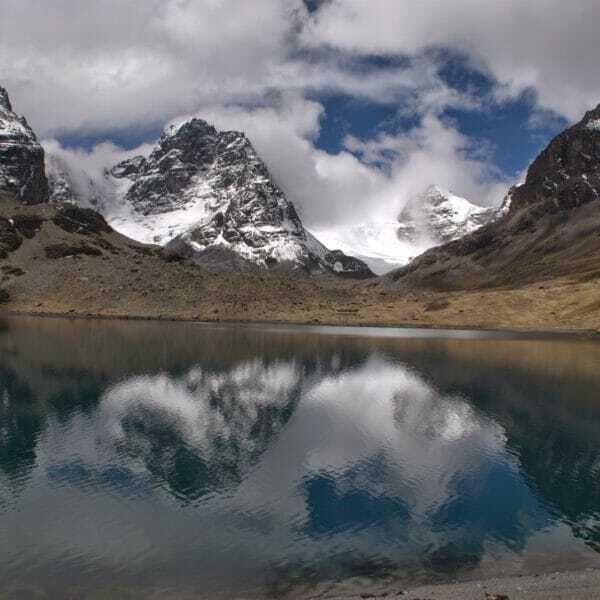
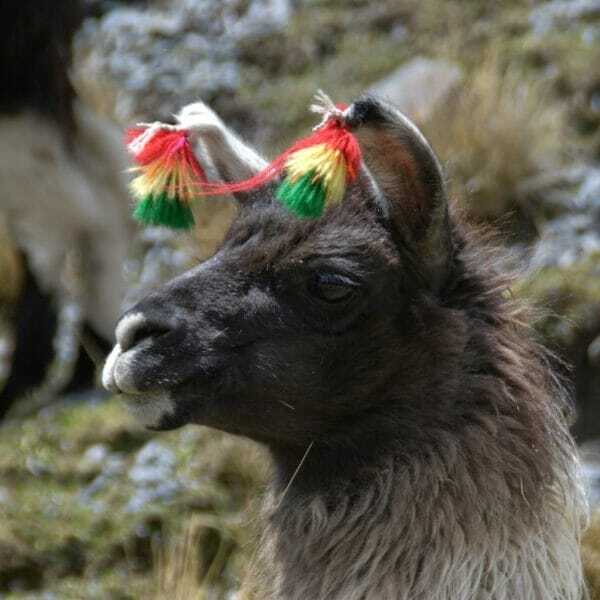
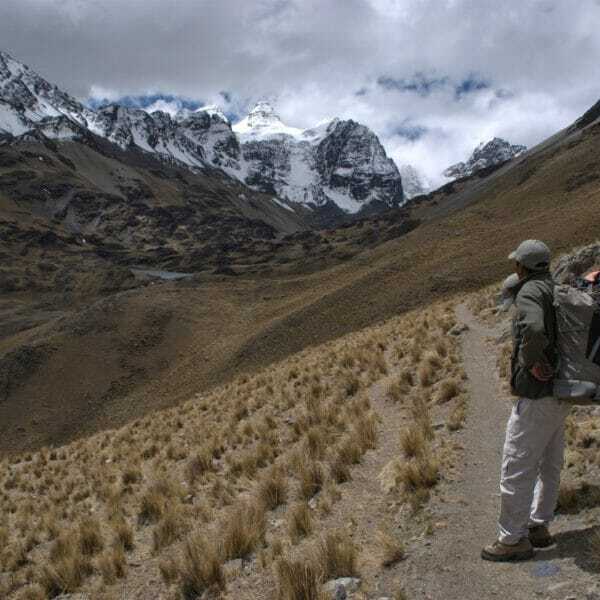
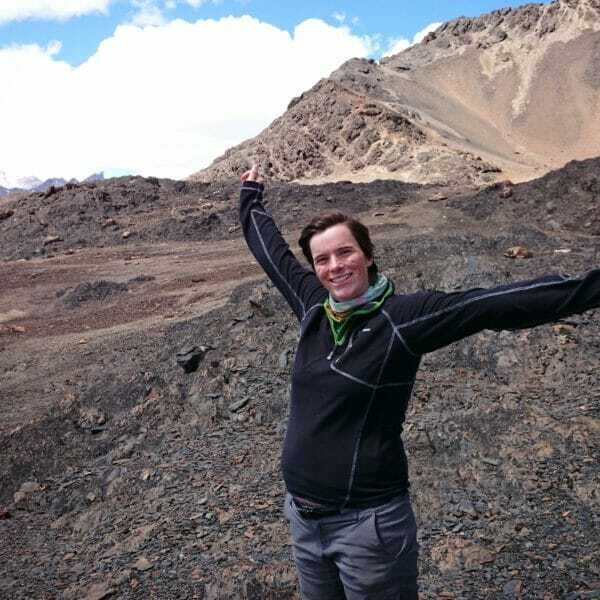
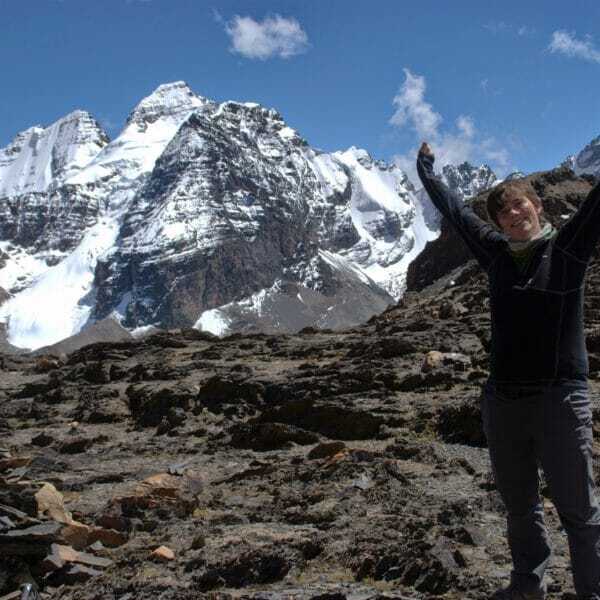
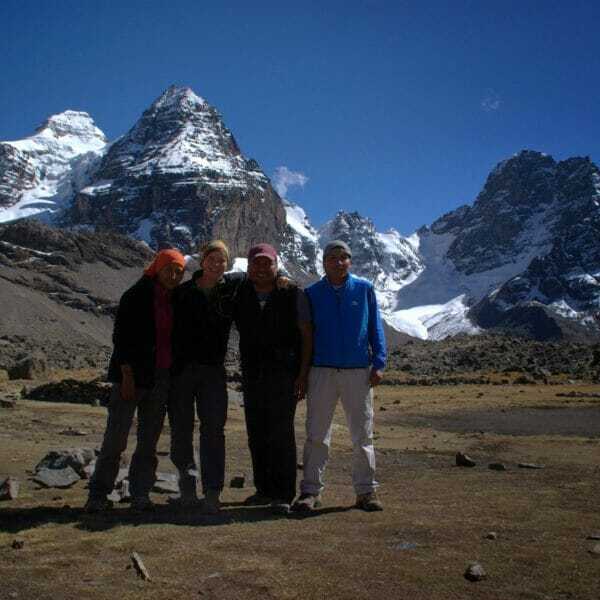
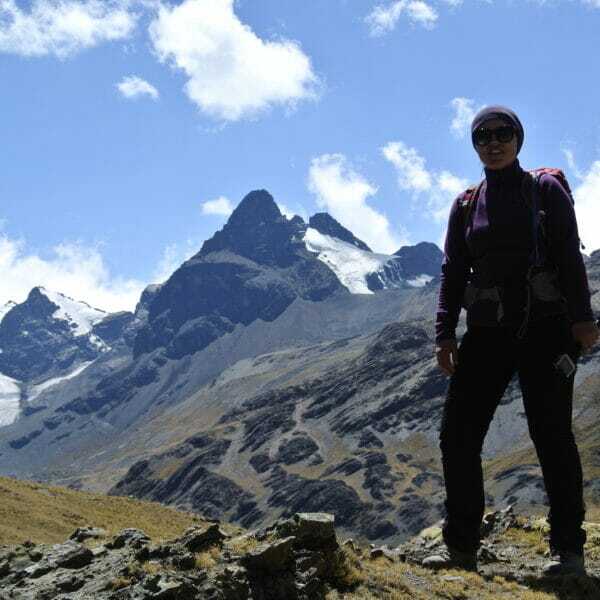
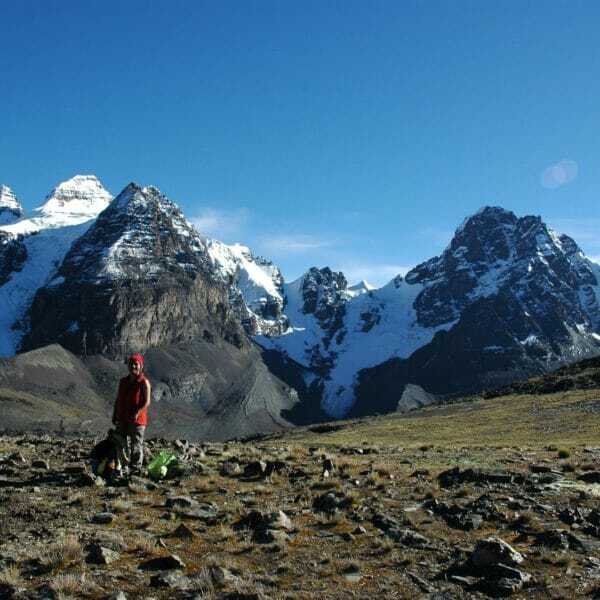
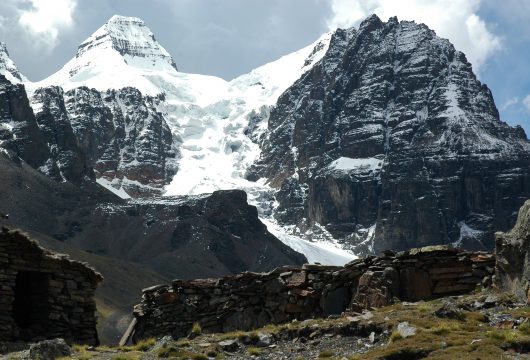
 a Tailor Made Tour
a Tailor Made Tour 